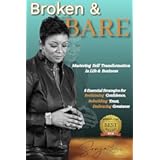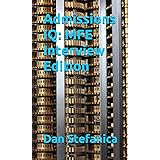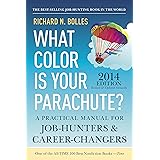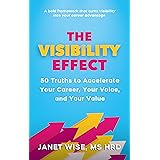Navigating the job market can often feel like a labyrinth, with the job interview being one of its most critical junctions. As discussed in the insightful video above, securing an interview is a significant achievement in itself. It signals that your application has successfully navigated applicant tracking systems and captured the attention of hiring managers who perceive you as a potential asset. This initial success is a testament to your skills and experience, and it lays the groundwork for you to truly shine. To convert that initial interest into a job offer, meticulous job interview preparation is essential. This guide expands on the video’s invaluable advice, offering further insights into each step to help you excel in your upcoming interview.
Mastering Your Job Interview Mindset
The foundation of a successful job interview is often considered to be a robust mindset. It is widely understood that many job seekers approach interviews with an almost apologetic gratitude, focusing primarily on proving their worth to the company. However, a more empowering perspective is frequently encouraged: view the interview as a mutual evaluation process. Just as an employer assesses whether your skills align with their needs, it is also an opportunity for you to ascertain if the company’s culture, values, and the specific role are a good fit for your aspirations and professional growth.
Cultivating confidence is paramount. It is crucial to internalize the fact that if an interview has been extended, your qualifications are already recognized as valuable. Hiring managers are typically looking for reasons to hire, not to reject, as their objective is to fill the position with the best possible candidate. Therefore, being seen as a proactive, skilled professional who can offer solutions to their organizational challenges can significantly enhance your appeal.
Strategic Job Description Analysis
The job description often serves as an invaluable roadmap for job interview preparation. This document outlines the key responsibilities, required qualifications, and desired skills for the role. Its careful review is not merely about understanding the position but about strategically identifying the core competencies an employer seeks.
Decoding Keywords for Interview Success
In many initial interviews, especially those conducted by HR or hiring department representatives, the primary objective is often a filtering process. These interviewers may not possess a deep technical understanding of the role’s day-to-day intricacies. Instead, their task commonly involves ticking off predefined boxes, often centered around specific keywords. These keywords are typically extracted directly from the job description and represent the essential requirements for the position.
To optimize your responses, a methodical approach is advised. It is suggested that the ten to fifteen most common job interview questions be identified and prepared for, with answers carefully crafted to incorporate these critical keywords. For instance, if a role requires proficiency in “data analysis” and “Python,” these terms should be explicitly mentioned when discussing relevant experiences. This technique helps interviewers easily identify that you meet their foundational requirements, moving them closer to checking off their checklist items. Practicing these scripted answers sufficiently, so they sound natural rather than rehearsed, is a key component of effective communication.
Preparing for Common Interview Questions
Beyond keyword alignment, interview preparation must also encompass the ability to articulate experiences through compelling narratives. Questions such as “Tell me about a time you overcame an obstacle,” “Describe a situation where you achieved something significant at work,” or “How do you handle disagreements with colleagues?” are frequently posed. These behavioral questions are designed to elicit specific examples of your past performance, which are often used to predict future behavior.
A widely recommended framework for structuring these answers is the STAR method: Situation, Task, Action, Result. By clearly outlining the context (Situation), your specific responsibility (Task), the steps you took (Action), and the positive outcome (Result), a comprehensive and impactful story can be conveyed. This method ensures that all relevant details are covered, demonstrating problem-solving skills, initiative, and the tangible results of your efforts.
Comprehensive Company and Industry Research
Beyond understanding the role itself, a significant component of job interview preparation involves thorough research into the company and its industry. This proactive step not only equips you with knowledge but also demonstrates genuine interest and diligence to potential employers.
Leveraging Company Websites and News
The official company website is frequently the first port of call for research. Sections such as “About Us,” “Mission,” “Values,” and “Careers” pages often provide deep insights into the organization’s ethos, strategic direction, and public commitments. Familiarity with these values allows for the tailoring of interview responses, showcasing how your personal and professional values align with those of the company. Furthermore, career pages can sometimes offer preliminary information about benefits, such as 401K matching or paid leave policies, which can subtly inform questions asked at the end of an interview.
Supplementing website research with a review of recent news is also highly beneficial. By simply searching the company’s name on Google and filtering by the “News” tab, current events can be uncovered. Has the company recently undergone a merger, launched a new product, or received an industry award? Awareness of such developments not only provides talking points but also indicates a commitment to staying informed about the industry landscape. For example, learning about a competitor’s new sustainable product line could inspire a thoughtful question during the interview, demonstrating strategic thinking.
The Power of LinkedIn for Interview Prep
LinkedIn stands as a powerful networking and research tool in the modern job search. Creating a comprehensive profile, if one does not already exist, is highly advisable. If the name of the interviewer is known, their LinkedIn profile can be reviewed. This can provide context on their professional background, career trajectory, and potentially areas of shared interest. While it is important to be mindful that individuals may receive notifications when their profile is viewed, this act is generally perceived as proactive and indicative of thorough preparation, rather than being considered intrusive.
Moreover, the company’s LinkedIn page offers a wealth of information. Browsing the “People” tab can reveal connections, such as shared universities or previous workplaces. Discovering a mutual connection can be a powerful asset; a polite, concise message requesting interview tips or insights from an internal contact can act as an extremely potent “super weapon,” as highlighted in the video. An internal referral is often considered to significantly enhance a candidate’s application, adding substantial credibility and increasing the likelihood of success.
Crafting Thoughtful Questions for Interviewers
The segment at the end of an interview, where candidates are asked if they have any questions, is a critical opportunity that should always be seized. Not having questions prepared is frequently seen as a missed chance to demonstrate engagement and strategic thinking. It is generally advised that four to five well-formulated questions be prepared, with a strong emphasis on specificity and relevance.
Questions that delve into the specifics of the role, such as “Who would I be reporting to in this position?” or “What is considered the most important soft skill for success in this role?” are often well-received. Even more impactful are questions that reflect the research undertaken, for instance, referencing a recent company development or an industry trend. For example, inquiring, “I noticed the company recently expanded into X market; how do you envision this impacting the team I would be joining?” showcases a candidate’s broader understanding and strategic foresight. Such questions are golden opportunities to distinguish oneself and affirm a genuine, informed interest in the organization.
Selecting Your Professional Interview Attire
While skills and experience are paramount, professional presentation, including attire, plays a significant role in creating a positive first impression. The general consensus is that being overdressed is almost always preferable to being underdressed for an interview, suggesting a cautious approach to wardrobe selection.
Understanding Dress Codes and Industries
The appropriate attire can vary considerably across industries and company cultures. For highly conservative fields, such as legal or finance, a business formal ensemble, typically a suit in black, grey, or navy, is expected. Conversely, a creative role within a more relaxed tech environment might call for smart business casual, perhaps involving tailored dark jeans and a blazer. A practical guideline is often recommended: dress one step above the company’s typical daily attire. If employees wear uniforms, business casual may be appropriate. If business casual is the norm, then business formal is suggested for the interview. The key is to aim for modesty and professionalism, ensuring that the focus remains on your qualifications rather than your clothing choices.
Importance of Fit and Presentation
Beyond the style of clothing, the fit and overall presentation are critical. Ill-fitting garments, whether too baggy or too tight, can inadvertently convey an impression of unprofessionalism. Therefore, ensuring clothes are properly tailored and free from stains or wrinkles is essential. Furthermore, personal hygiene is non-negotiable; a clean and presentable appearance reinforces professionalism. Options for sourcing appropriate attire range from budget-friendly stores like TJ Maxx and H&M to mid-range retailers like Everlane and Nordstrom. The investment in well-fitting, clean, and appropriate attire is an investment in your personal brand and contributes positively to the overall impression made during a job interview.
The Value of Mock Job Interview Practice
The final and often most underestimated step in job interview preparation is engaging in a mock interview. This practice provides an invaluable opportunity for self-assessment and refinement before the actual event. It is advised that a family member or friend be enlisted to conduct this mock session, provided they are capable of offering candid and constructive feedback.
Gaining Self-Awareness Through Feedback
The objective of a mock interview is not merely to rehearse answers but to simulate the entire interview experience. This includes dressing appropriately, entering without notes, and responding to questions as if it were a real interview. The feedback received from a trusted and honest observer is crucial for identifying blind spots in performance. For instance, a mock interviewer might point out repetitive fidgeting, a lack of consistent eye contact, or the overuse of verbal fillers. Such observations are difficult to detect independently but are vital for improving overall interview efficacy. This external perspective is indispensable for gaining the self-awareness needed to correct any distracting habits.
Mastering Non-Verbal Communication
The importance of non-verbal cues cannot be overstated in an interview setting. Research suggests that a significant portion—reportedly sixty-five percent—of what is communicated is conveyed through body language. Therefore, consistent eye contact, an open posture, appropriate gestures, and a confident demeanor are just as important as the verbal responses provided. A mock interview provides a safe environment to practice and refine these elements, ensuring that your body language reinforces your verbal message of competence and professionalism. By addressing these often-overlooked aspects of communication, candidates can present a more polished and confident image, ultimately strengthening their appeal to potential employers during the job interview.









